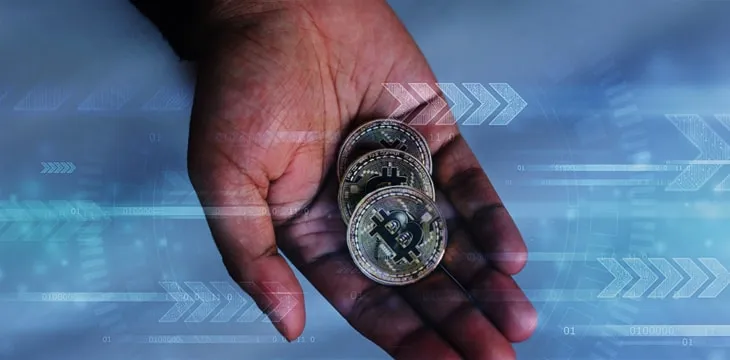|
Getting your Trinity Audio player ready...
|
Implementing SPV and Token standards is a priority if Bitcoin wants to achieve its mass adoption goals. That’s the view of the recently-formed Technical Standards Committee, which has set 5 billion users as the figure Bitcoin must achieve to claim success.
Committee member Ryan X. Charles posted on PowPing a review of the top technical priorities Bitcoin needs to address. As well as SPV and tokens standards, he listed the other issues that form the “standardization roadmap”—systems that, once implemented across the ecosystem, will make it far easier to build services that work well and thus attract more users from individuals to large enterprise.
What is SPV and why is it important?
SPV stands for “Simplified Payment Verification.” Described by Satoshi Nakamoto in the original Bitcoin whitepaper, it’s a means for Bitcoin to scale and proliferate by working on smaller devices, like mobile phones and laptops. Rather than needing to download and verify the entire blockchain, services using SPV download only the block headers which have been verified by nodes they trust. To further save space, block headers may be discarded after a period of time (e.g. a few years).
Although most wallets in use today use similar means to function, most use custom-built techniques to do this kind of checking rather than an SPV standard. There isn’t much difference to the user, but a common SPV standard makes the network more secure—it allows for wider distribution of block headers and a better idea of which ones to trust.
Charles asked “Why haven’t any wallets actually implemented SPV?” The answer is, he said, poor understanding of what Bitcoin actually was in its earlier days, which led to development of services that didn’t consider scaling, high security, user experience or legality. Developers built software libraries with those earlier misunderstandings that have been used and built-upon, and continue to be today. While using SPV standards would be cheap once implemented, there is work involved in rebuilding existing services to accommodate them properly.
Standard SPV wallets must be peer-to-peer rather than relayed via other nodes. This makes them much faster, and reduces load on the back-end. They must also include inputs and Merkle proofs so a user doesn’t always have to be online to make a transaction, and this is important for any future payment channels that don’t send transactions to nodes. Wallets must also track block headers from the nodes, using standardized forms of doing so such as Miner ID and Merchant API.
Tokenization
A standard protocol for tokenizing other assets on the Bitcoin blockchain is more vital than many current Bitcoin users would realize. Notably, Charles said, “Most people will not consciously send and receive Bitcoin.”
This prediction sees a future where most users are using the blockchain to transact in tokenized assets like fiat currencies, stocks and bonds, and other commonly-tradeable items. Bitcoin (as in the BSV asset itself) would be used mainly to pay nodes to “stamp” transactions on the blockchain.
Charles noted there is currently no standard token protocol. Several people are working to develop one, but in the end it’s better to choose a single version that all businesses can use. However, a standard token “wrapper” would mean tokens created would be interoperable between all services, even if there are several protocols that are better used in some cases over others.
The other priority for tokenization is less technical—it involves convincing governments and large businesses to support and use BSV tokenized assets. Having protocols would go some way to winning their confidence, but the information/education campaign is just as important.
Other standardization priorities on TSC’s roadmap
Having standards improves compatibility and interoperability between services, producing “a more usable Bitcoin,” Charles said. The end result is better services and more users. The network is more robust and secure, there are fewer headaches for developers with access to more libraries and plug-in components, while end-users discover new services that work well and integrate with everything else, without hassles.
The other 11 items on the Technical Standards Committee’s roadmap list are just as important as SPV and tokenization. Several include extending the ways Bitcoin connects to the existing network, physical and legal worlds, as well as building on existing standards like Paymail.
- Paymail (for human and machine-readable names)
- Signatures, encryption, and Diffie-Hellman (DH) key exchange (for security and to interact with other protocols)
- KYC (Know-Your-Customer regulatory standards)
- Invoices (making it easier to request specific payments)
- NAT traversal (Network Address Translation, for over-the-internet communications)
- Peer-to-peer messaging
- On-chain audit trail
- Peer-to-peer transactions, Merkle proofs, and input transactions
- Names and avatars for Paymail
- FATF compliance
- Paymail authentication or “sign in with Paymail”
Bitcoin Association announced it was forming a Technical Standards Committee in June 2020. Chaired by nChain Chief Technology Officer Steven Shadders, its purpose is “to professionalise the development of Bitcoin in order to support major enterprise use and facilitate global adoption”.
Its 11 founding members include individuals from several regions and well-known companies in the Bitcoin ecosystem—including Money Button’s Ryan X. Charles, James Belding from Tokenized, Mempool and Dot Wallet’s Lin Zheming, Centbee’s Angus Brown, and Alex Fauvel of Two Hop Ventures.

 07-14-2025
07-14-2025 





